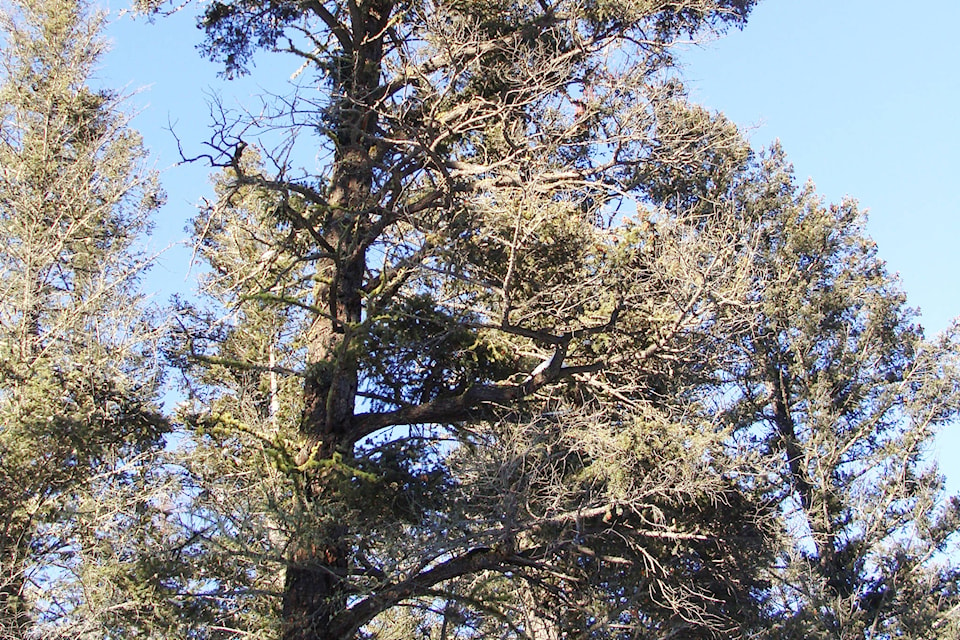From my house overlooking the Chimney Creek and Fraser River, I can still see many red trees, which I think are mostly the result of Fir Bark Beetle. Over the past three decades that I have lived here, there have been coniferous tree losses to snow press, Pine and Fir Bark Beetle, Spruce Budworm and isolated but violent wind storms. The deciduous trees have been attacked by weevils, fungus, Sapsuckers, rodents and black bears, as well as snow press. For the past decade, there has been a gradual but persistent die-off of mature Douglas Fir trees. Unlike the Fir Bark Beetle, which usually turns the tree red in one year and produces the sawdust on the bark, this attack turns a portion of the tops and branches red over a number of years. The attacked stems eventually die, giving the trees a rather ragged appearance, with few if any cones last year, which was especially noticeable during the above-average cone crop year. I have been trying to identify the cause using my Field Guide to Forest Damage in BC. This book has lots of good pictures of the agents, as well as the symptoms of the attack.
Because the red needles were showing up in late winter, I was favouring the cause to be winter kill, drought or maybe a fungus. Spruce Budworm could also be a cause, but the red needles appearing in the winter did not seem to fit and I had not witnessed the tiny brown moth in any abundance last summer. The die-off seemed to be more prominent on the dryer south slopes, which led me to implicate moisture stress being part of the problem.
An additional literature search did not help much so I determined it was time to get some professional help. I sent my comments, along with pictures, to Leo Rankin (a retired forest pathologist). Leo solicited the help of the current forest specialist David Rush, Cariboo Forest Pathologist with the Ministry of Forests, Lands and Natural Resource Operations, and he and Leo paid me a visit a few weeks ago.
Their conclusion was Spruce Budworm as being the major mortality factor. According to my field guide, it would be the Western Spruce Budworm. The tiny brown moth lays eggs in masses on needles in late August, and larvae feeding takes place from late April through June. Red tops and branches start showing up in September where chewed needles appear in webbing.
Most of the symptoms fit well with the trees around my residence, but more specific observations this summer and fall are necessary to confirm the main cause and possibly any contributing factors.
Determining the causes of tree mortality is often more of an art than a science, with the many interrelated factors influencing the life cycles of forest pests like insects, fungus and fluctuating animal life cycles. Complicating the situation are the variable life cycles of some insects, like yearly versus two- or more year lifecycles. Population surges in animals like rabbits can also cause severe attacks, especially to the young trees, which are attacked at ground level. Ongoing concerns about climate change are also going to contribute to how forests are attacked by pests that have been around for thousands of year.
Jim Hilton is a professional agrologist and forester who has lived and worked in the Cariboo-Chilcotin for the past 40 years. Now retired, Hilton still volunteers his skills with local community forests organizations.
